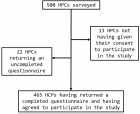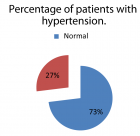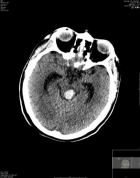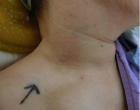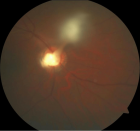Table of Contents
Nano-formulations for Ophthalmic Treatments
Published on: 29th December, 2017
OCLC Number/Unique Identifier: 7325061328
Ocular disorders encompass a multitude of diseases that are unique in their cause, therapy and degree of severity. Due to distinctive morphology of the eye, efficient ocular drug delivery has proven to be a difficult task. Current treatments of ophthalmological diseases include the usage of both intrusive as well as nonintrusive methods such as injections, eye drops, ointments, gels etc. The current state of the art drug delivery methods are associated with low bioavailability and therefore nanotechnology based drug delivery approached are evolving as for improving the therapeutic index of currently used drugs against variety of ocular disorders. This review highlights the recent developments in nano-formulations for ophthalmic treatment and also offers discussions towards the future prospectus of nano-formulations in the mainstream of ophthalmic diseases.
Paediatric Medicines: Formulation Considerations
Published on: 31st July, 2017
OCLC Number/Unique Identifier: 7317595687
The use of unlicensed and off-label medicines in children is widespread and has raised an increasing concern over the last years. The majority of medicines taken by children are extemporaneously compounded by pharmacist, and there is a lack of information regarding bioavailability, suitability and stability. These formulations must be prepared from pure active substance and not from commercially available dosage forms. The development of paediatric formulations, particularly those suitable for very young children, can be a challenge to pharmacists. There is limited knowledge available about the acceptability of different dosage forms, administration volume, dosage form size, taste, safety of formulation excipients regarding to age and development status. The selection of formulation and route of administration depends on the disease being treated and the clinical condition. European Guidelines and reflection papers recommend that pharmaceutical development should consider some parameters like capability, acute or long-term illness, caregiver convenience, disability, culture differences and formulations more attractive to children must be explored.
Sense and antisense Oligodeoxynucleotides to Glun1 Nmdar are Cognitive Enhancers (Nootropics) and protective agents in normal and ischemic (Anoxic) conditions-In vitro study
Published on: 7th July, 2017
OCLC Number/Unique Identifier: 7317653967
Aims: Implication of modified N-methyl-D-aspartate receptors (NMDAR) in synaptic plasticity and learning was investigated in normal and pathological conditions.
Study design: We studied the efficiency of synaptic plasticity, the development of the long-term potentiation/depression (LTP/LTD) in olfactory cortex slices, treated with antisense or sense oligodeoxynucleotides (aODNs and sODNs) to the GluN1 subunit of NMDAR.
Main outcome: aODNs induced the LTD development in slices after high-frequency tetanization. Contrariwise, in sliced treated with sODNs the enhanced LTP developed. Under conditions of severe anoxia (10 min), treatment of slices with aODNs and sODNs contributed to the preservation of synaptic activity which has been blocked in the control untreated slices. In practical implications such directed up- and down regulation of NMDAR might be useful in the readjustment of brain activity by the controlling balance of excitation/inhibition.
A Further Example Showing Efficiency of a Modeling Method Based on the Theory of Dynamic Systems in Pharmacokinetics
Published on: 25th January, 2017
OCLC Number/Unique Identifier: 7317655701
Aims: To present a further example showing an efficiency of a modeling method based on the theory of dynamic systems in pharmacokinetics.
Study design:The goals of the current study were twofold: to present (1) a further example showing efficiency of a modeling method based on the theory of dynamic systems in pharmacokinetics, an to perform (2) a next step in tutoring the use of computational and modeling tools from the theory of dynamic systems in pharmacokinetics.
The data available in the study by Plusquellec et al. published in the October Issue of the Journal Medical Engineering & Physics were used to exemplify the method considered here. For modeling purpose an advanced mathematical modeling method was employed. Modeling was performed using the computer program named CTDB described in the study by Dedík et al. published in September 2007 issue of the Journal Diabetes Research and Clinical Practice.
Main outcome: Modeling results revealed that computational and modeling tools from the theory of dynamic systems can be successfully used in the development of a mathematical model of such a complicated process as is a multiple sites discontinuous gastrointestinal absorption.
Kinematics and Electromyographic Analysis of Gait with Different Footwear
Published on: 24th January, 2017
OCLC Number/Unique Identifier: 7317654943
Kinematic analysis and surface electromyography are tools being used as important methods to evaluate the human gait and to analyze different types of footwear aiming modifications and adaptations to the human locomotor system, especially of the feet. The aim of the present study was to analyze through electromyography (EMG) the muscles tibialis anterior (TA) and gastrocnemius lateralis (GL) and gastrocnemius medialis (GM) and to capture digital images of the human gait in four different footware situations, barefoot with tennis, platform shoes and high heels. Twenty healthy women with a mean age of 22.6 years took part in this experiment, which was performed on a treadmill at a speed of 3.8 m/s. The results showed that shoes that do not allow a normal movement of the tarsal bones caused changes in the trajectory of the gait, which promotes a greater muscular movement. This study concluded that shoes closer to a normal position and allow greater mobility of the feet, decrease muscular demands, which in everyday situations cause less localized muscular fatigue.

HSPI: We're glad you're here. Please click "create a new Query" if you are a new visitor to our website and need further information from us.
If you are already a member of our network and need to keep track of any developments regarding a question you have already submitted, click "take me to my Query."






